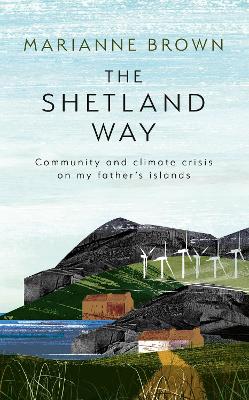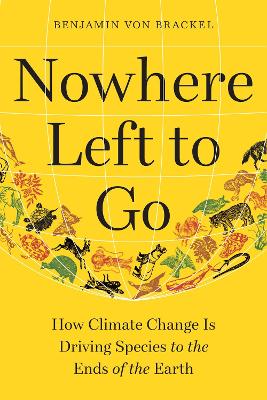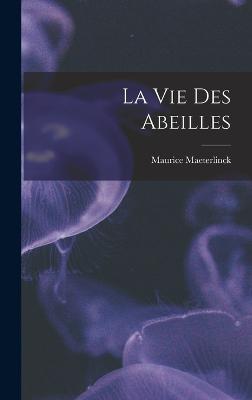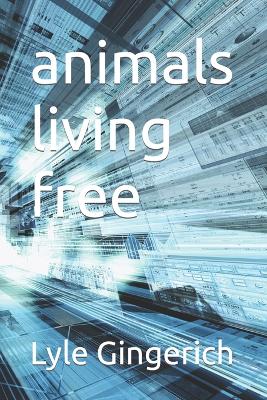Forget Me Not
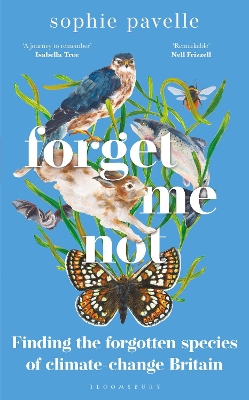 portes grátis
portes grátis
Forget Me Not
Finding the forgotten species of climate-change Britain - WINNER OF THE PEOPLE'S BOOK PRIZE FOR NON-FICTION
Pavelle, Sophie
Bloomsbury Publishing PLC
06/2022
352
Dura
Inglês
9781472986214
15 a 20 dias
Descrição não disponível.
CHAPTER ONE: MARSH FRITILLARY
I begin my journey in the south-west of England, where I take a short train and cycle ride to Bodmin Moor to see one of the UK's rarest species of butterfly, which is persisting deep in the heart of the Cornish mire despite unimaginable challenges.
CHAPTER TWO: HARBOUR PORPOISE
Wasting no time, next I head straight to the Welsh coast, where I travel to Pembrokeshire to try and spot Britain's smallest cetacean feeding amid the infamous tidal races and renewable energy developments.
CHAPTER THREE: SEAGRASS
Staying in Wales and heading north to Snowdonia, I snorkel the freezing waters of the Irish Sea to find out why seagrass is fast becoming the habitat that we cannot afford to lose.
CHAPTER FOUR: GREY LONG-EARED BAT
Back home in Devon again, I hike one of my favourite stretches of the Jurassic coast to a rural farm to see whether I can find one of the last maternity roosts of Britain's rarest and most elusive bat.
CHAPTER FIVE: BLACK GUILLEMOT
Eager to get up to Scotland, I venture to the Orkney Islands, specifically the northernmost isle of this unique archipelago, to spend time with one of the British Isles' most overlooked seabirds and try to understand more about the threats this quirky bird faces.
CHAPTER SIX: DUNG BEETLES
Testing out how ready the UK is to function on electric vehicles, I borrow an electric car and drive to Knepp Castle Estate to learn why dung and its beetles are making a resurgence in this tiny patch of England and why we cannot ignore dung.
CHAPTER SEVEN: ATLANTIC SALMON
Back home to Devon and into a kayak, I travel down a swollen, autumnal river to try and understand why, in the face of climate change, the epic salmon run might become a feat of the past.
CHAPTER EIGHT: MOUNTAIN HARE
Travelling north to Scotland again, I head to the high heather moorlands of the East Cairngorms to see our native mountain hare and investigate why they are set to become strangers in their own habitat if temperatures continue to rise.
CHAPTER NINE: MERLIN
Cycling across England's Peak District to the Dark Peak, I'm searching for Britain's smallest falcon, hoping to discover why we keep forgetting about these birds and how they will fare in a warming world.
CHAPTER TEN: BILBERRY BUMBLEBEE
Finishing on my home patch, I make a final trip to Dartmoor, searching for Britain's 'mountain bee' and one of its last surviving populations in the south-west to understand better why its upland habitat might become too hot to handle.
I begin my journey in the south-west of England, where I take a short train and cycle ride to Bodmin Moor to see one of the UK's rarest species of butterfly, which is persisting deep in the heart of the Cornish mire despite unimaginable challenges.
CHAPTER TWO: HARBOUR PORPOISE
Wasting no time, next I head straight to the Welsh coast, where I travel to Pembrokeshire to try and spot Britain's smallest cetacean feeding amid the infamous tidal races and renewable energy developments.
CHAPTER THREE: SEAGRASS
Staying in Wales and heading north to Snowdonia, I snorkel the freezing waters of the Irish Sea to find out why seagrass is fast becoming the habitat that we cannot afford to lose.
CHAPTER FOUR: GREY LONG-EARED BAT
Back home in Devon again, I hike one of my favourite stretches of the Jurassic coast to a rural farm to see whether I can find one of the last maternity roosts of Britain's rarest and most elusive bat.
CHAPTER FIVE: BLACK GUILLEMOT
Eager to get up to Scotland, I venture to the Orkney Islands, specifically the northernmost isle of this unique archipelago, to spend time with one of the British Isles' most overlooked seabirds and try to understand more about the threats this quirky bird faces.
CHAPTER SIX: DUNG BEETLES
Testing out how ready the UK is to function on electric vehicles, I borrow an electric car and drive to Knepp Castle Estate to learn why dung and its beetles are making a resurgence in this tiny patch of England and why we cannot ignore dung.
CHAPTER SEVEN: ATLANTIC SALMON
Back home to Devon and into a kayak, I travel down a swollen, autumnal river to try and understand why, in the face of climate change, the epic salmon run might become a feat of the past.
CHAPTER EIGHT: MOUNTAIN HARE
Travelling north to Scotland again, I head to the high heather moorlands of the East Cairngorms to see our native mountain hare and investigate why they are set to become strangers in their own habitat if temperatures continue to rise.
CHAPTER NINE: MERLIN
Cycling across England's Peak District to the Dark Peak, I'm searching for Britain's smallest falcon, hoping to discover why we keep forgetting about these birds and how they will fare in a warming world.
CHAPTER TEN: BILBERRY BUMBLEBEE
Finishing on my home patch, I make a final trip to Dartmoor, searching for Britain's 'mountain bee' and one of its last surviving populations in the south-west to understand better why its upland habitat might become too hot to handle.
Este título pertence ao(s) assunto(s) indicados(s). Para ver outros títulos clique no assunto desejado.
global warming; climate change Britain; UK wildlife; conservation; nature writing; conserving habitats; endangered; eco travel; eco-tourism; threatened; native; harbour porpoise; black guillemot; bilberry bumblebee; merlin; green wave; seagrass; dung beetles; low-carbon; Atlantic salmon; mountain hare; Greta Thunberg; Gen Z; Millennials; facing extinction; decline; lost
CHAPTER ONE: MARSH FRITILLARY
I begin my journey in the south-west of England, where I take a short train and cycle ride to Bodmin Moor to see one of the UK's rarest species of butterfly, which is persisting deep in the heart of the Cornish mire despite unimaginable challenges.
CHAPTER TWO: HARBOUR PORPOISE
Wasting no time, next I head straight to the Welsh coast, where I travel to Pembrokeshire to try and spot Britain's smallest cetacean feeding amid the infamous tidal races and renewable energy developments.
CHAPTER THREE: SEAGRASS
Staying in Wales and heading north to Snowdonia, I snorkel the freezing waters of the Irish Sea to find out why seagrass is fast becoming the habitat that we cannot afford to lose.
CHAPTER FOUR: GREY LONG-EARED BAT
Back home in Devon again, I hike one of my favourite stretches of the Jurassic coast to a rural farm to see whether I can find one of the last maternity roosts of Britain's rarest and most elusive bat.
CHAPTER FIVE: BLACK GUILLEMOT
Eager to get up to Scotland, I venture to the Orkney Islands, specifically the northernmost isle of this unique archipelago, to spend time with one of the British Isles' most overlooked seabirds and try to understand more about the threats this quirky bird faces.
CHAPTER SIX: DUNG BEETLES
Testing out how ready the UK is to function on electric vehicles, I borrow an electric car and drive to Knepp Castle Estate to learn why dung and its beetles are making a resurgence in this tiny patch of England and why we cannot ignore dung.
CHAPTER SEVEN: ATLANTIC SALMON
Back home to Devon and into a kayak, I travel down a swollen, autumnal river to try and understand why, in the face of climate change, the epic salmon run might become a feat of the past.
CHAPTER EIGHT: MOUNTAIN HARE
Travelling north to Scotland again, I head to the high heather moorlands of the East Cairngorms to see our native mountain hare and investigate why they are set to become strangers in their own habitat if temperatures continue to rise.
CHAPTER NINE: MERLIN
Cycling across England's Peak District to the Dark Peak, I'm searching for Britain's smallest falcon, hoping to discover why we keep forgetting about these birds and how they will fare in a warming world.
CHAPTER TEN: BILBERRY BUMBLEBEE
Finishing on my home patch, I make a final trip to Dartmoor, searching for Britain's 'mountain bee' and one of its last surviving populations in the south-west to understand better why its upland habitat might become too hot to handle.
I begin my journey in the south-west of England, where I take a short train and cycle ride to Bodmin Moor to see one of the UK's rarest species of butterfly, which is persisting deep in the heart of the Cornish mire despite unimaginable challenges.
CHAPTER TWO: HARBOUR PORPOISE
Wasting no time, next I head straight to the Welsh coast, where I travel to Pembrokeshire to try and spot Britain's smallest cetacean feeding amid the infamous tidal races and renewable energy developments.
CHAPTER THREE: SEAGRASS
Staying in Wales and heading north to Snowdonia, I snorkel the freezing waters of the Irish Sea to find out why seagrass is fast becoming the habitat that we cannot afford to lose.
CHAPTER FOUR: GREY LONG-EARED BAT
Back home in Devon again, I hike one of my favourite stretches of the Jurassic coast to a rural farm to see whether I can find one of the last maternity roosts of Britain's rarest and most elusive bat.
CHAPTER FIVE: BLACK GUILLEMOT
Eager to get up to Scotland, I venture to the Orkney Islands, specifically the northernmost isle of this unique archipelago, to spend time with one of the British Isles' most overlooked seabirds and try to understand more about the threats this quirky bird faces.
CHAPTER SIX: DUNG BEETLES
Testing out how ready the UK is to function on electric vehicles, I borrow an electric car and drive to Knepp Castle Estate to learn why dung and its beetles are making a resurgence in this tiny patch of England and why we cannot ignore dung.
CHAPTER SEVEN: ATLANTIC SALMON
Back home to Devon and into a kayak, I travel down a swollen, autumnal river to try and understand why, in the face of climate change, the epic salmon run might become a feat of the past.
CHAPTER EIGHT: MOUNTAIN HARE
Travelling north to Scotland again, I head to the high heather moorlands of the East Cairngorms to see our native mountain hare and investigate why they are set to become strangers in their own habitat if temperatures continue to rise.
CHAPTER NINE: MERLIN
Cycling across England's Peak District to the Dark Peak, I'm searching for Britain's smallest falcon, hoping to discover why we keep forgetting about these birds and how they will fare in a warming world.
CHAPTER TEN: BILBERRY BUMBLEBEE
Finishing on my home patch, I make a final trip to Dartmoor, searching for Britain's 'mountain bee' and one of its last surviving populations in the south-west to understand better why its upland habitat might become too hot to handle.
Este título pertence ao(s) assunto(s) indicados(s). Para ver outros títulos clique no assunto desejado.
global warming; climate change Britain; UK wildlife; conservation; nature writing; conserving habitats; endangered; eco travel; eco-tourism; threatened; native; harbour porpoise; black guillemot; bilberry bumblebee; merlin; green wave; seagrass; dung beetles; low-carbon; Atlantic salmon; mountain hare; Greta Thunberg; Gen Z; Millennials; facing extinction; decline; lost


